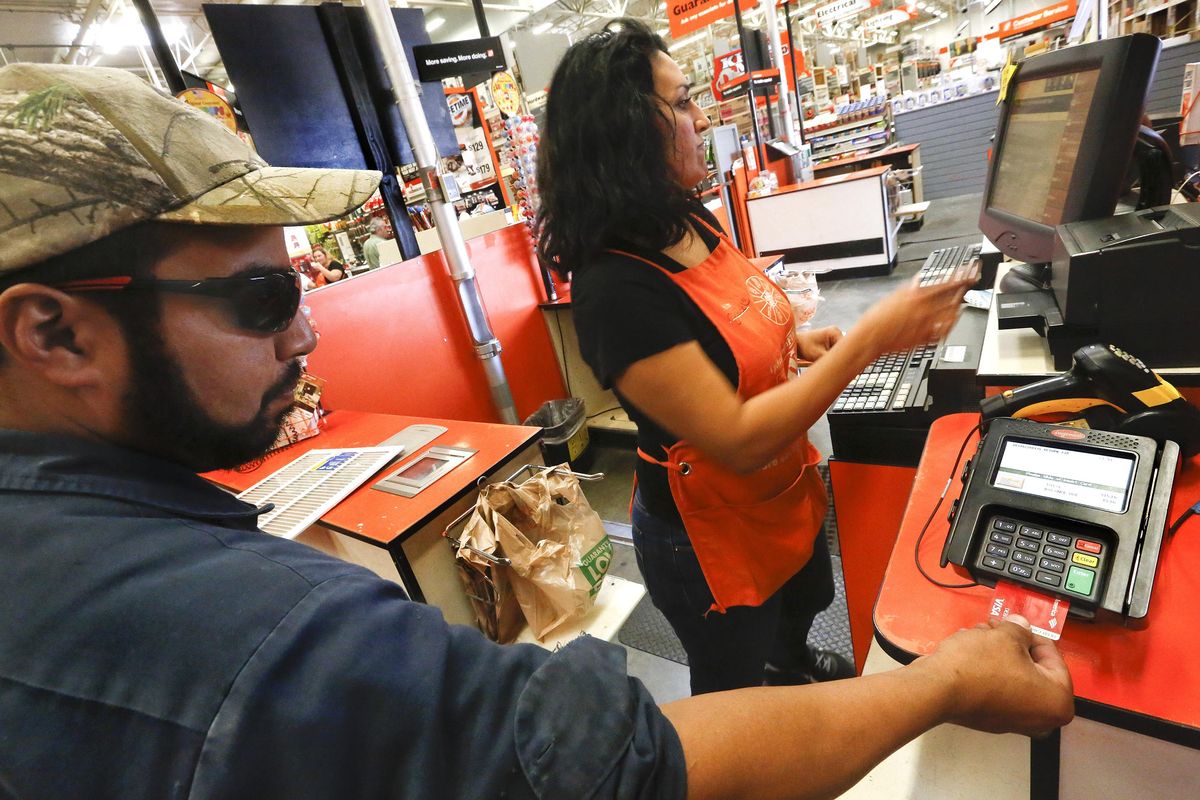This week, credit cards with chips are to become the standard

LOS ANGELES – Starting Thursday, most shoppers will no longer be swiping their new credit and debit cards into merchants’ card readers to make purchases. They’ll be inserting them instead – chip side first.
The new pieces of plastic that banks and other card issuers have been sending to customers contain a tiny metallic chip designed to reduce counterfeiting, just as similar Europay credit cards have cut such fraud throughout Europe.
The technology in the microchip makes it more difficult for criminals to forge fakes and easier for merchants to authenticate cardholders.
On Thursday, the credit card industry will add bite to its rollout by shifting liability for covering counterfeits to the party that has not adopted chip technology – either the merchant or the credit card issuer.
“To the extent that this cuts down on fraud, it’s probably a win for everyone,” said Michael Simkovic, an associate professor at Seton Hall University School of Law.
For merchants, this means ensuring their sales terminals accept the chip technology and contain a slot in their readers for the new cards. Unlike a card swiped quickly, a chip-enabled card must remain in the reader until the machine OKs its removal.
That longer processing time has made some customers uneasy. At a Home Depot in the Los Angeles area, Robert Montanez said he worried it would give criminals a greater opportunity to steal his data if the sales terminal were hacked.
“I don’t trust it as much,” said Montanez, 39. “I leave it in way too long. The swipe is faster.”
About 70 percent of credit cards will be chip-enabled by the end of the year, said Doug Johnson, senior vice president of payments and cybersecurity policy at the American Bankers Association, the leading bank trade group.
Prepaid cards also are moving toward chip technology, but at a much slower rate because of a wider variety of offerings, lower value limits and less risk for merchants and card issuers, said Brian Riley, an executive at research firm CEB TowerGroup.
Some prepaid cards, such as those for international travel, already carry the chip technology, but many others, including low-value branded gift cards and incentive cards, will probably never convert to EMV, an industry term named after the three companies that created and developed the chip card in the 1990s: Europay, MasterCard and Visa.
The standard magnetic stripe cards will probably remain in circulation for years, said Seth Ruden, senior fraud consultant for the Americas at ACI Worldwide, a payment systems company. Full compliance on the merchant side won’t happen until 2017 when automated fuel dispensers are also required to have payment terminals that read the chip cards.
The change comes as card fraud has more than doubled in the U.S. over the last 15 years while falling in much of the rest of the world where chip-enabled cards have been in place for much of that time.
Throughout the 2000s, chip cards were rolled out across Europe, and Britain fully implemented EMV technology in 2006. Counterfeit fraud in Britain dropped to 10 percent of all fraud from 26 percent over the decade ended 2013, CEB TowerGroup said.
Even though chip-enabled cards are difficult to counterfeit, anti-fraud experts would like to eliminate that possibility altogether. Many already are looking at mobile payment systems as possibly offering better protection.
For now, though, the chip card will become the predominant piece of plastic in consumers’ wallets.
Large retailers such as the Home Depot Inc., Target Inc. and Wal-Mart Stores Inc. said the transition to sales terminals for chip cards is complete or on track to finish by Thursday’s deadline.
But many small businesses said they aren’t ready.
According to a Wells Fargo/Gallup survey in July, 49 percent of small-business owners said they were aware of the looming shift in liability. But only 31 percent said their current readers accept chip cards, and only 29 percent said they intended to make the change before Thursday. One-fifth said they aren’t planning to upgrade at all.
Cost is one factor. Prices for the new readers alone range from $50 to $600.